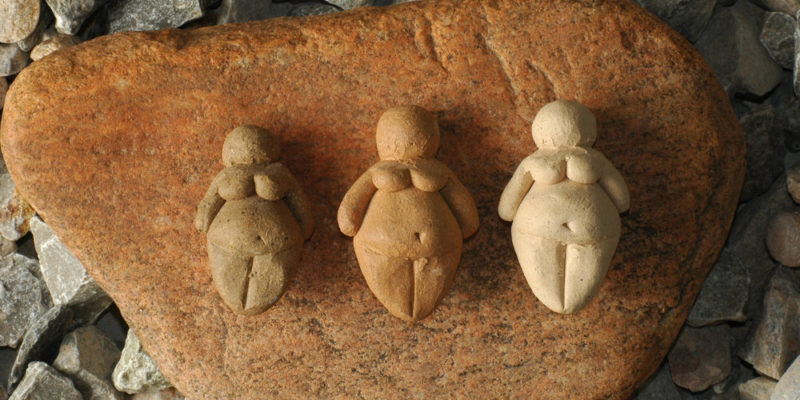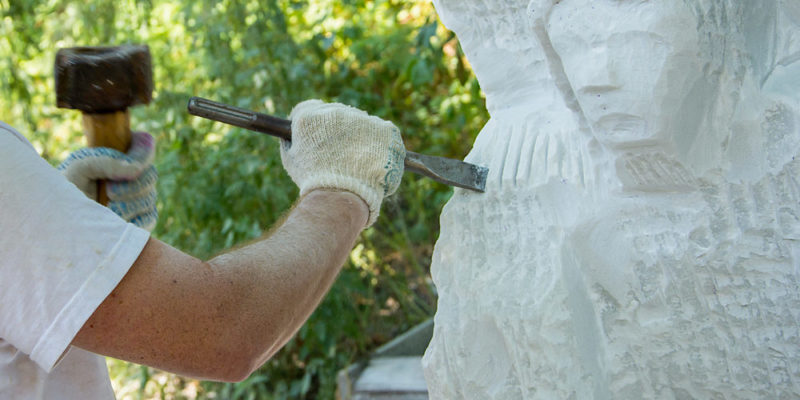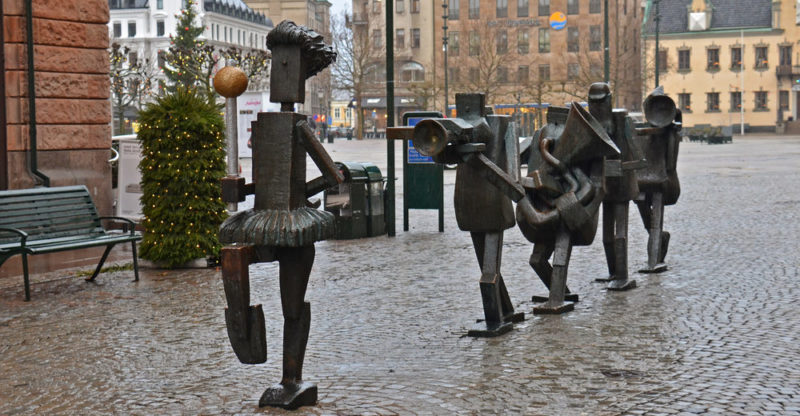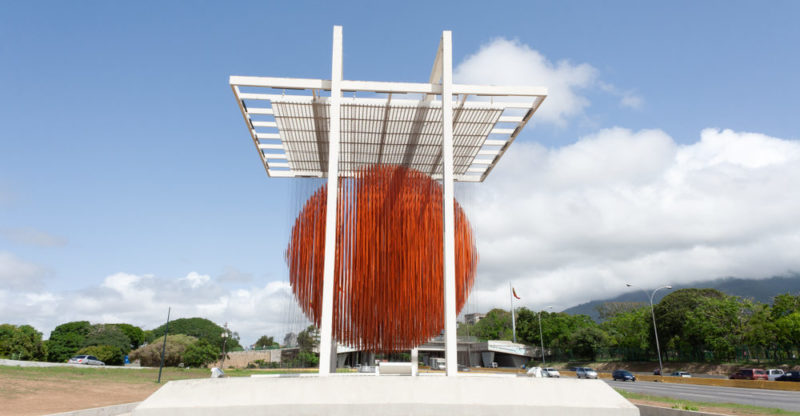We explain what sculpture is, its history and how this art is classified. Also, what are its characteristics, materials and importance.
What is sculpture?
Sculpture is one of the so-called Fine Arts , of ancient practice in human history , and which consists of the modeling, carving or construction of three-dimensional figures or reliefs from various resistant materials , such as wood, clay or various types of stone. The work resulting from this process is also called sculpture, and whoever practices it, a sculptor.
Creating a sculpture can involve a diverse number of techniques , ranging from chiselling to casting to molding. Likewise, this art houses a repertoire of trends, materials possible and contrasting aesthetics. That is why there are realistic or hyper-realistic sculptures of human figures, but also abstract works.
Sculptures occupy an important place in urban design and architecture , as well as in interior and exterior decoration. The emblematic figures of a society or culture , real or imaginary, tend to endure in time represented in this way.
Origin of the sculpture

Sculpture is very present in the imaginary of humanity .
Numerous classical or ancient stories speak of the possibility of creating human figures from inert materials and then bringing them to life .
Some speak of human magic, like the Hebrew Golem .
Others explain human creation as a sculpture work by God or the gods.
Sculpture was one of the forms of representation cultivated by the most primitive human being , its first appearances date back to the Paleolithic .
32,000 to 27,000 years ago, for example, certain female figures known today as "Paleolithic Venus" were carved in stone : the Venus of Willendorf and the Venus of Lespugue. They are believed to be ancient fertility icons, carved from limestone using instruments also made of stone.
History of sculpture
Sculpture and bas-relief were forms of art in practically all ancient peoples . Thus they represented their deities or protective entities, placing them in temples, palace entrances or other strategic sites for civil, religious or military life. Some statues were even used to deter eventual invaders.
The first treatises on sculptural techniques appear during Greek antiquity , around the 5th century BC. Many of the works of this time, which represented mythological characters , were fundamental in the development of sculpture in later times, such as the Roman Empire and the Renaissance .
However, in medieval times the prevailing Christianity rejected any pagan motif , preferring instead religious sculptures. That is why the sculpture created altarpieces and decorative pieces for cathedrals and churches , with a predominance of Jesus of Nazareth and biblical motifs.
In modern times, sculpture underwent many changes to allow the abandonment of figurativeism , thus giving rise to abstraction, a process that painting experienced similarly. The sculpture then ventured into geometric shapes, free and subjective motifs.
Types of sculpture

In principle, a distinction must be made between two basic forms of sculpture , which are sculpture as such (represents human, animal, abstract figures, etc.), and secondly ornamental sculpture, which serves as an auxiliary element to both the first , as to architecture.
On the other hand, the sculptures are classified according to their shape in:
- Statues They represent an isolated three-dimensional entity, generally human, and therefore receive their name according to the pose in which it is found: seated (sitting), recumbent (lying down), praying (kneeling), etc.
- Reliefs. Sculptures carved from a background, or attached to it in some way. It is classified in turn as bas-relief, when the image of the background that serves as a support is cut out, and high-relief when the figures stand out from the background that accompanies it.
- Busts. Sculptures of the head or upper torso of a human figure. It is the sculptural equivalent of the portrait.
- Torsos. Human figures represented without heads or arms, only the trunk.
- Kinetic. A type of abstract sculpture that uses physical sources of movement.
- Penetrable. A type of abstract sculpture that allows the viewer to enter it, as if it were an artistic installation.
Main sculpture techniques

The sculpture involves various modeling techniques of the material. The most common are:
- Sculpted. It consists of mechanically removing the excess pieces from a block of material (generally using a chisel) to leave only the pieces that make up the desired figure.
- Modeling. Used in soft materials, it consists of shaping the paste using your hands or various metal tools, and then allowing it to dry and gain hardness. This is how clay, wax or plasticine is worked.
- Emptied A mold is made with the negative of the desired figure and some soft material is poured into it which is then allowed to harden, the mold is broken or removed and the sculpture is obtained.
- Embossed. A hammer and a series of molds or wedges are used to imprint the desired embossments or holes on a metal surface.
- Inlay. A hard mold is first manufactured, on which layers of softer metal, generally precious, are applied to force them to take the shape of the mold by force of blows. In this way, a hollow statue is obtained but with a solid appearance.
- Carving. Usual for woodworking, it is equivalent to sculpting, but a knife or softer material is used to cut the material and extract whole pieces, obtaining a specific shape.
Wide variety of materials

Currently, any material can be used to make a sculpture . However, the artist must take into account that the material gives it a specific look and also requires certain types of treatments.
Soft materials are more difficult to handle due to their crumbling, while hard materials are resistant, but require more physical effort . Some common materials in sculpture are:
- Clay. Used by humans since prehistoric times , it is easy to model and does not require tools. It is a wet material of suspended sediments, which when drying obtains its hardness and fragility.
- Stone. The most abundant material in the world, in principle, whose hardness guarantees long-lasting results, but requires special tools and a lot of effort. The most common in sculpture are limestone, marble, sandstone, alabaster, granite, quartz and jade, among others.
- Stucco. A paste made from lime, marble dust, gypsum, sand, and casein glue, dating back to Greek antiquity, when it was used to make molds. Later it was used abundantly in the Baroque , along with colored pigments.
- Metal . Iron , gold , copper , silver and bronzeplatesare common materials in the direct manufacture of works of art, either by deforming them, melting them or using them as an embossing surface.
- Wood . Different types of wood serve different purposes in sculpture, and can be carved and painted, or as a support for metal, ceramic or otherpieces.
Qualities of sculpture
Since the 20th century, sculpture has tested its own limits, so there are very few properties that can be attributed to all works . However, these generalizations can be noted, even if there are exceptions.
The sculptures in general are hard, solid forms , which maintain their specific shape. Depending on their material of manufacture they will be more or less resistant, more or less flexible and more or less durable.
Each one transmits an aesthetic, political or historical content to those who contemplate them, but it can vary over time . Museums are not only in charge of exhibiting these works but also of offering the most appropriate conditions for their conservation.
Why is sculpture important?

First of all, sculpture is a form of artistic expression . Along with architecture, it is the art that is most present in the urban landscape, in streets, parks and accompanying important buildings.
In addition, in general his works are durable in time and can survive the generation that made them, serving as a document for later ones or educating them in some element of their tradition. This is what happens with the statues of the heroes, for example, generally located in squares.
Contemporary sculpture
Like many other forms of art, sculpture underwent great changes throughout the 20th century . From that moment on, abstract art had a huge presence in contemporary art , hand in hand with movement, chromaticity and geometric shapes, leaving behind the realistic representation of the human figure.
Constant experimentation is also a contemporary mark, as well as the use of waste materials , or of common industrial or commercial elements, as happened with the ready-made of the Frenchman Marcel Duchamp in 1913.
Famous sculptors

Some famous sculptors are:
- Of antiquity. Phidias (480-430 BC), Polykleitos (-420 BC).
- From the European Renaissance . Michelangelo Buonarotti (1475-1564), Leonardo Da Vinci (1452-1519), Donatello (1386-1466).
- From the Modern Age. Antonio Canova (1757-1822), Auguste Rodin (1840-1917), Antonio Corradini (1688-1752).
- 20th century. Alexander Calder (1898-1976), Pablo Picasso (1881-1973), Camille Claudel (1864-1943), Marcel Duchamp (1887-1968).
Sculpture examples

Some famous sculptures are:
- Aphrodite of Milo (130 BC-100 BC) from Alexandros de Antioquia.
- La Pietá (1498-1499) by Michelangelo Buonarotti.
- Le Penseur (1881-1882) by Auguste Rodin.
- Fontaine (1917) by Marcel Duchamp,
- Esfera Caracas (1997) by Jesús Soto.
MA student of the TransAtlantic Masters program at UNC-Chapel Hill. Political Science with a focus on European Studies. Expressed ideas are open to revision. He not only covers Technical articles but also has skills in the fields of SEO, graphics, web development and coding. .
Leave a reply
Your email address will not be published. Required fields are marked *Recent post

Sport: What Is It, Types, Risks, Features, Characteristics and Examples

Dogs: Emergence, Features, Characteristics, Feeding and Breeds

Story: Definition, Elements, Structure, Features and Characteristics

